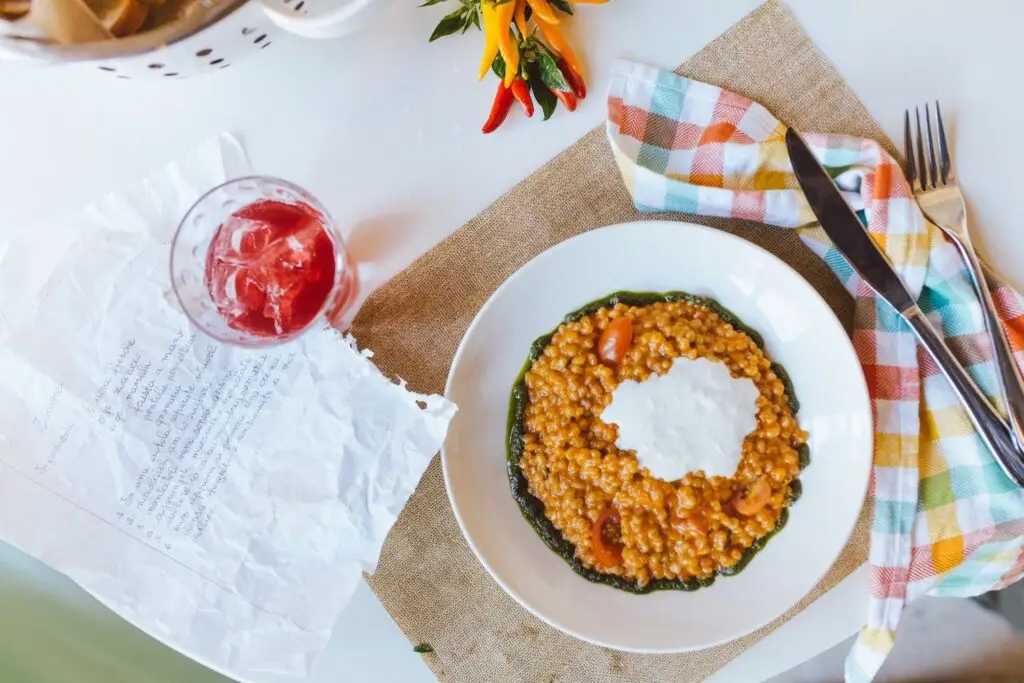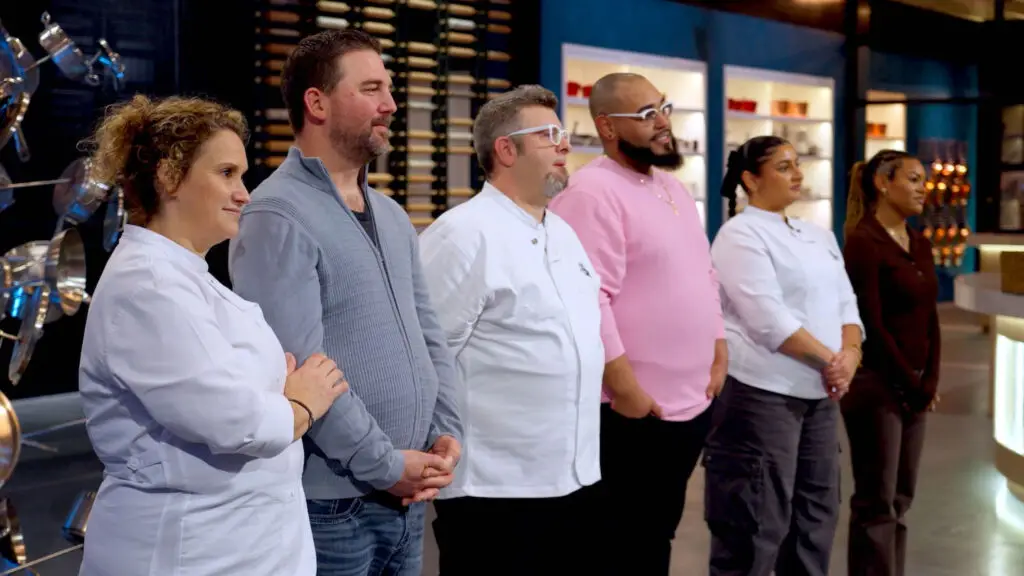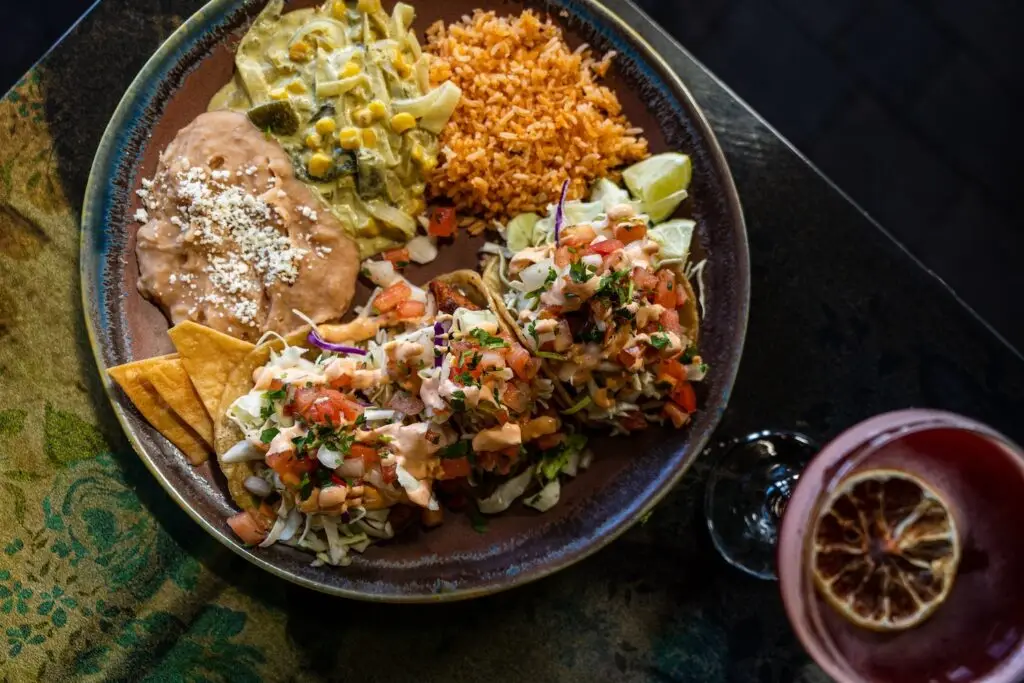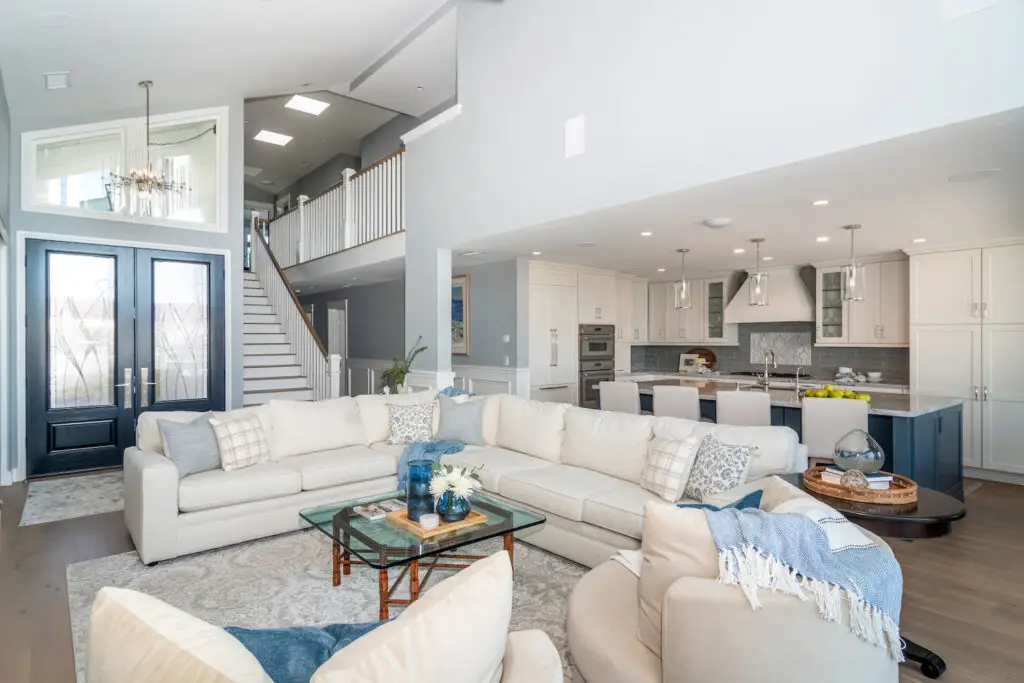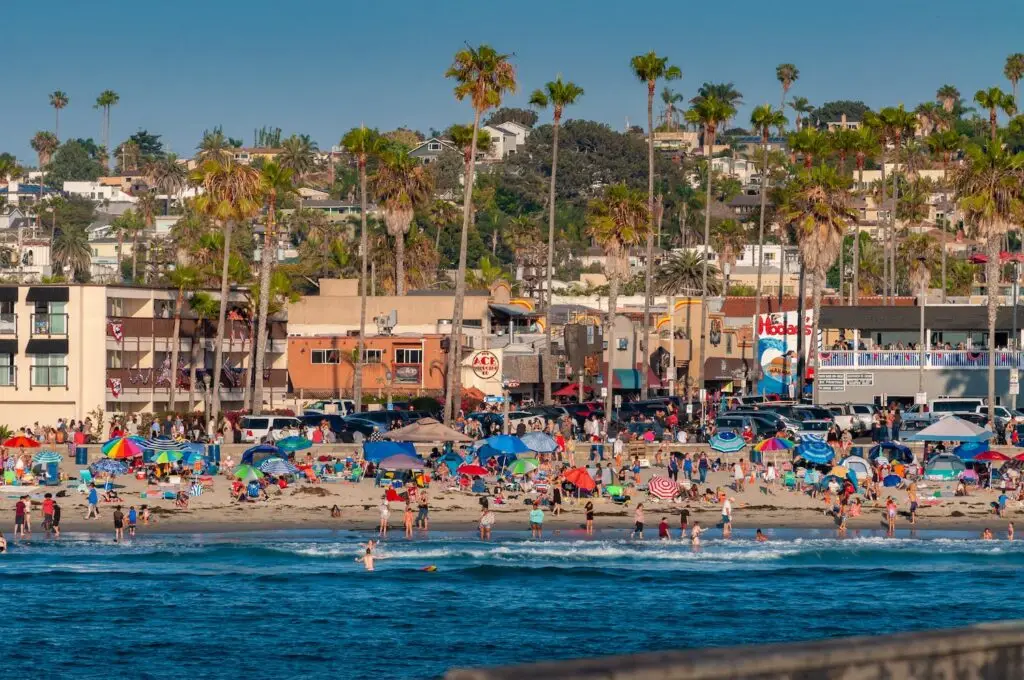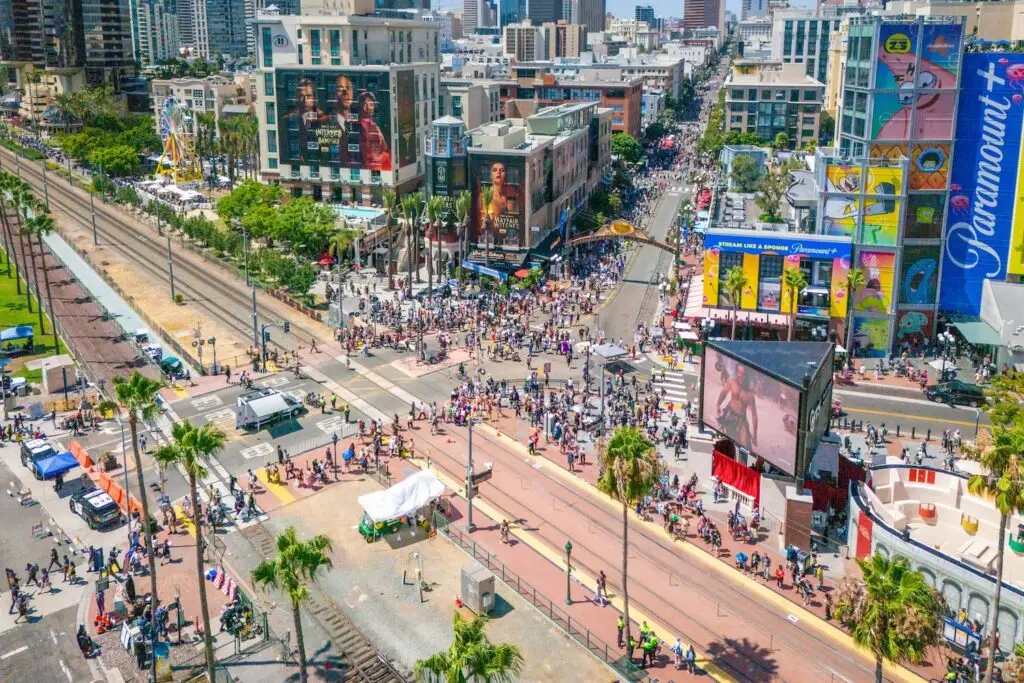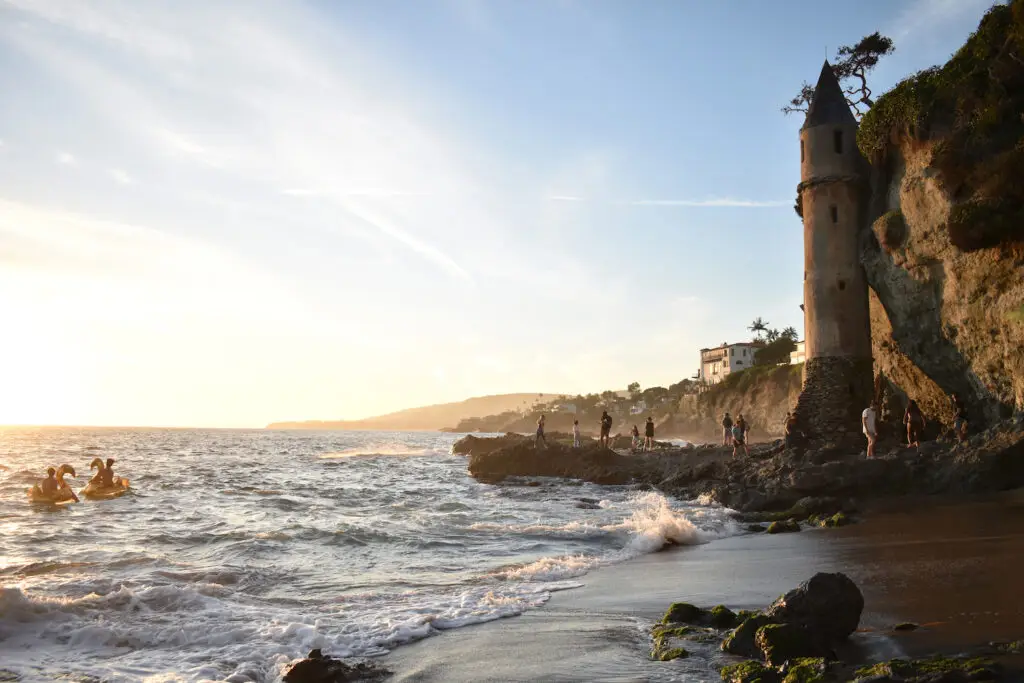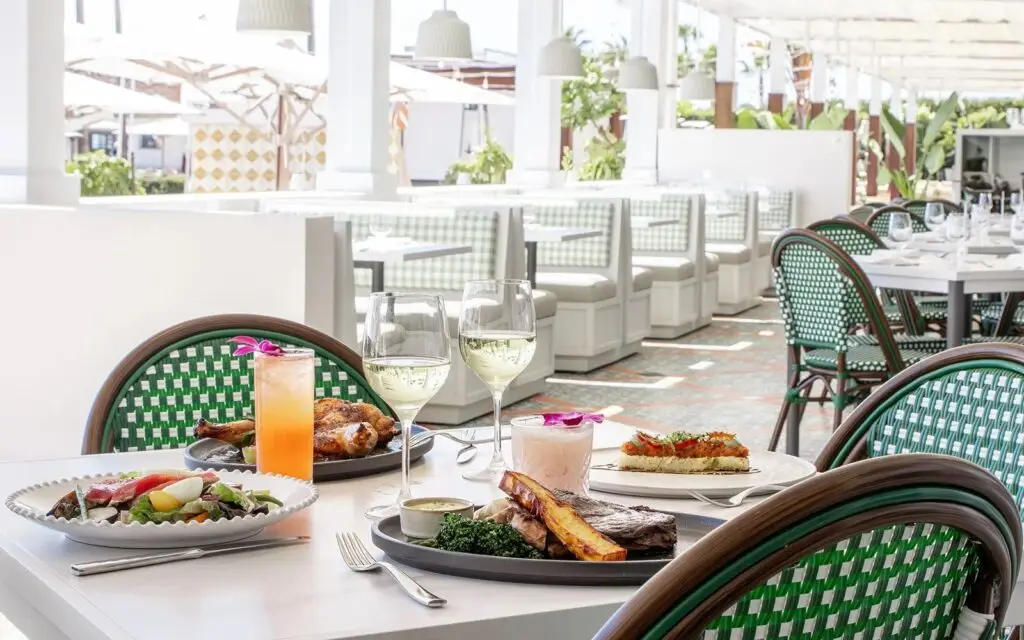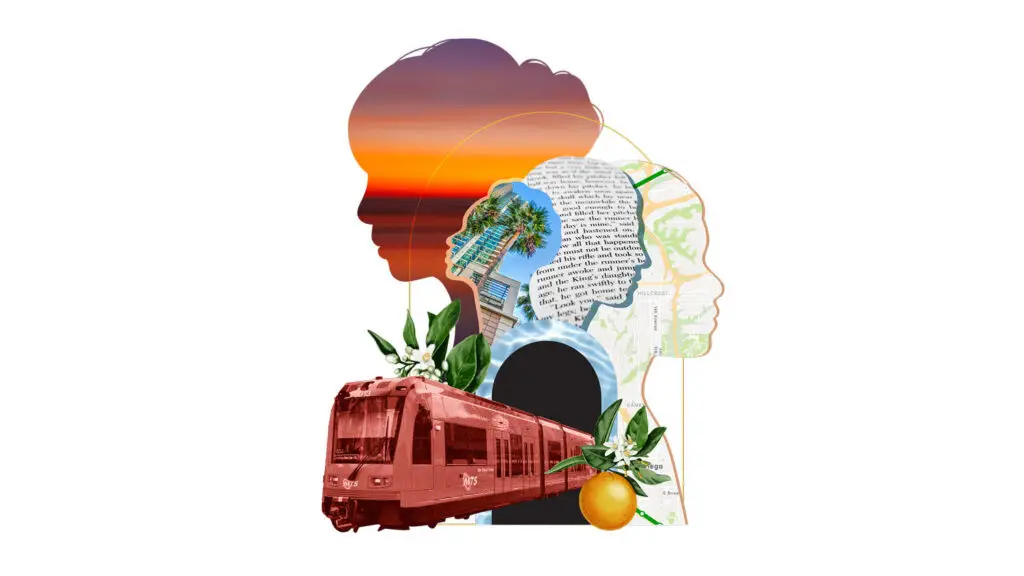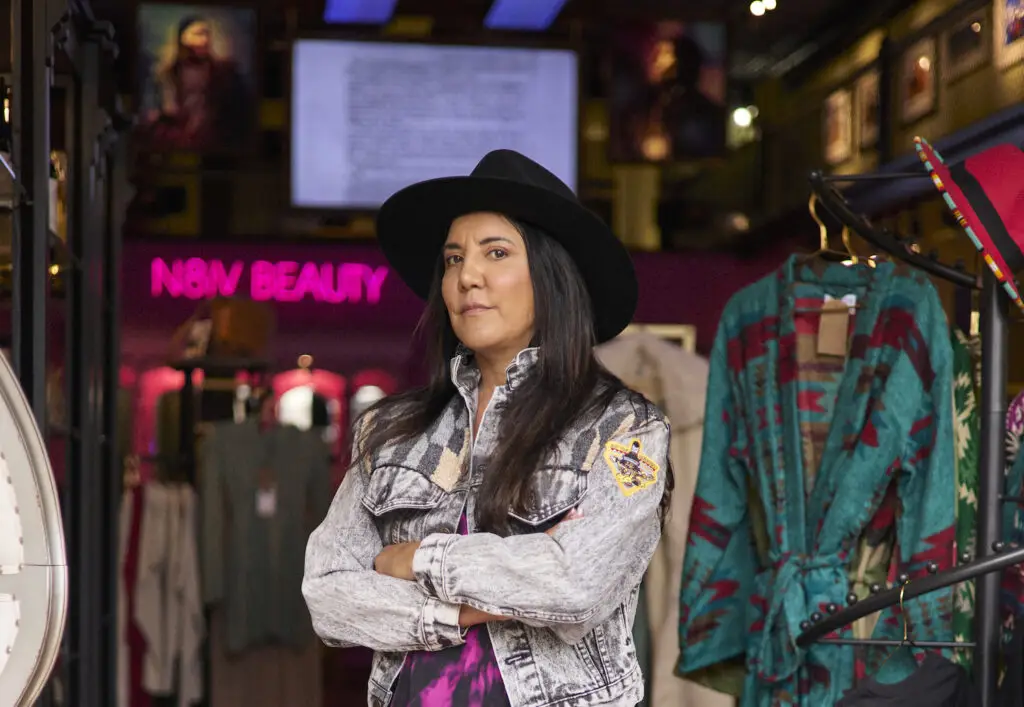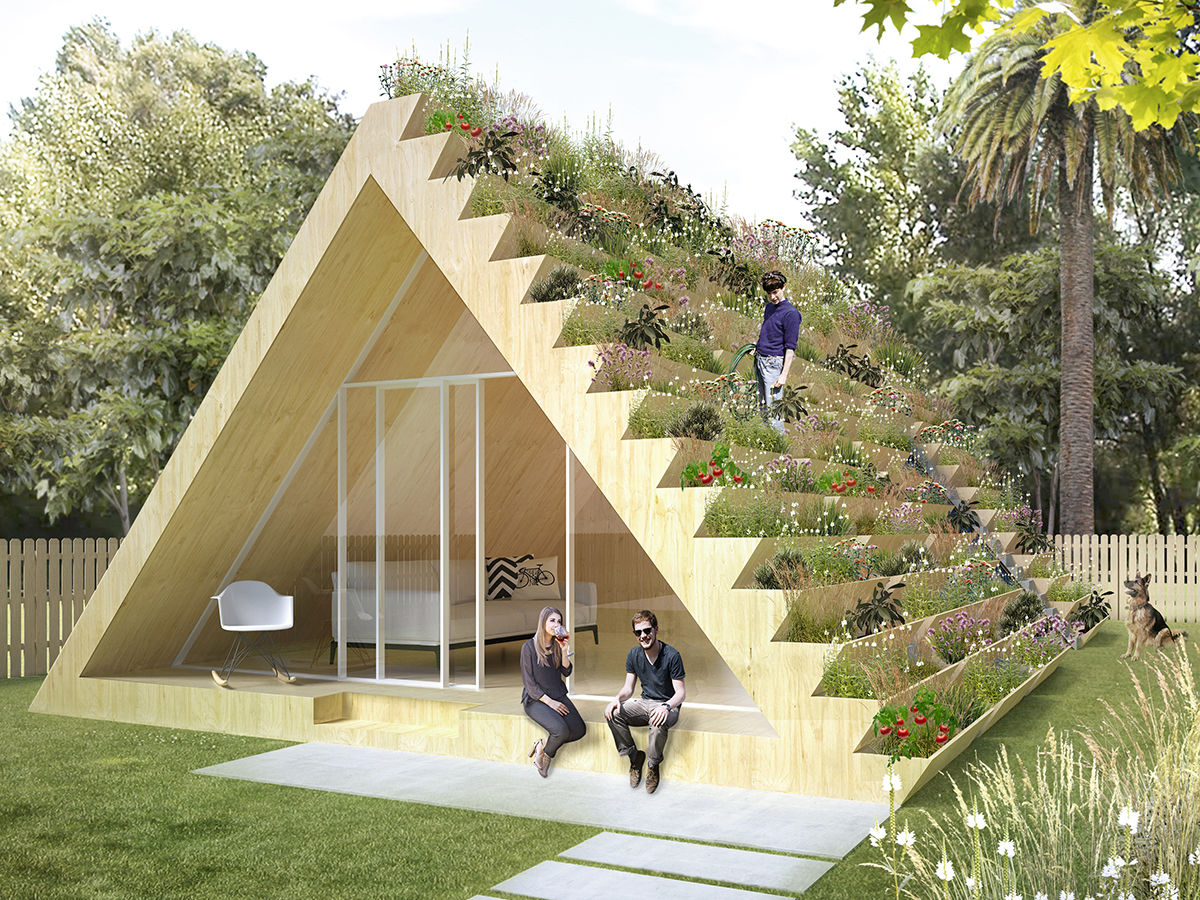Above: This ADU is currently under construction in North Park. The client wanted a granny flat and veggie garden but didn’t have space for both. Architect Ramiro Losada-Amor and his firm Modern Granny Flat solved the problem with this design.
As every San Diegan knows, our city has not been keeping up with the demand for housing—and the demand just keeps growing. The city of San Diego is expected to add another 150,000 residents in the next 10 years. By 2040, the county population is due to surpass four million. That means we need to build more and build faster, but we also have to be clever about it.
“We have to address housing in the same way we address the future of medicine, the way we eat, the way we dress,” says Jorge Ozorno, a professor at NewSchool of Architecture and Design. “We cannot design houses the same way we did in the last 30 years, because demographics have changed.”
Millennials are marrying later and living with roommates. There’s the gray market, there are DINKs, and housing will need to solve problems not just for groups or generations of people, but for animals too. “In some buildings there are probably more dogs than people.”
Here are a few predictions for San Diego.
Your home will be customized via app and 3D printed.
Before Ikea, there was Sears. Between 1908 and 1940, Americans were able to order “kit homes” from the Sears catalog and then assemble the parts once they arrived. It seems that history is repeating itself, at least in terms of homes made-to-order. “There are so many experiments going on right now where buildings are being assembled faster,” Ozorno says. “The customer can buy software and say, ‘I always like my bathroom like this and my bookshelves like that.’” A 3D printer using a mixture of lightweight soil and straw and sturdy concrete will create the walls from scratch in no time, leaving space for traditional doors and windows. “The future is defined by 3D printing.”
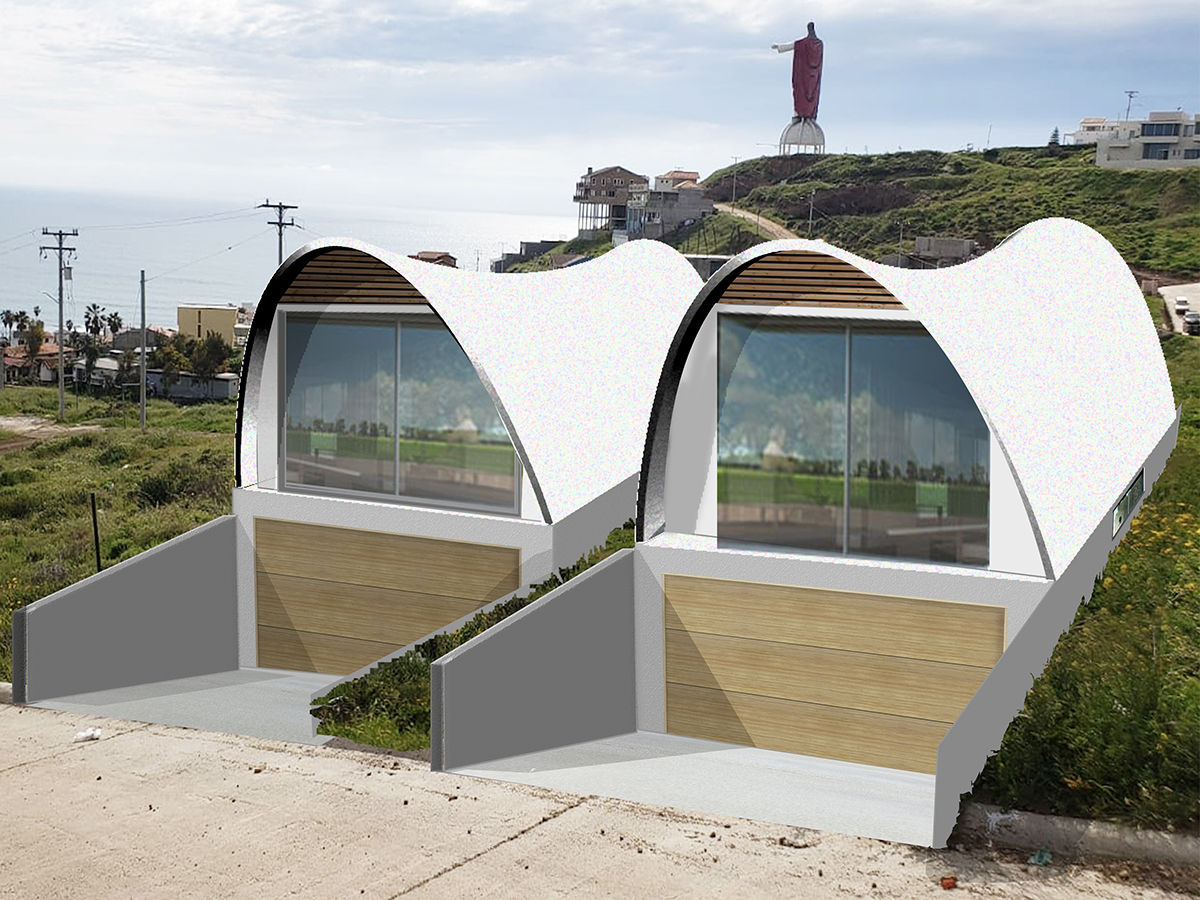
A rendering of a Binishell housing development in Rosarito
We’ll return to nature (sorta).
“At a time when it seems all other industries are reinventing themselves in new and exciting ways, why is the construction industry lagging technologically?” asks architect Nicoló G. Bini, president and CEO of Binishells, who says the last major development in efficient building was the invention of industrial prefabrication (e.g. the steel frame and the glass curtain wall). Over the past 10 years, Bini and his team developed the Binishell, an egg-shaped structure that can be erected three times faster than traditional construction, using about half the material and labor. They’re also safer and greener. “From a structural or safety standpoint, the beam-to-column connection is the weakest connection possible—that is why there are no right angles in nature,” Bini says. “By contrast, a thin shell is the strongest—that is why nature puts its most precious babies in eggs. Binishells are safe in floods, fires, earthquakes, and high winds.” Currently there are no Binishells in San Diego County, but there are a few in LA and Mexico that will be completed this year.
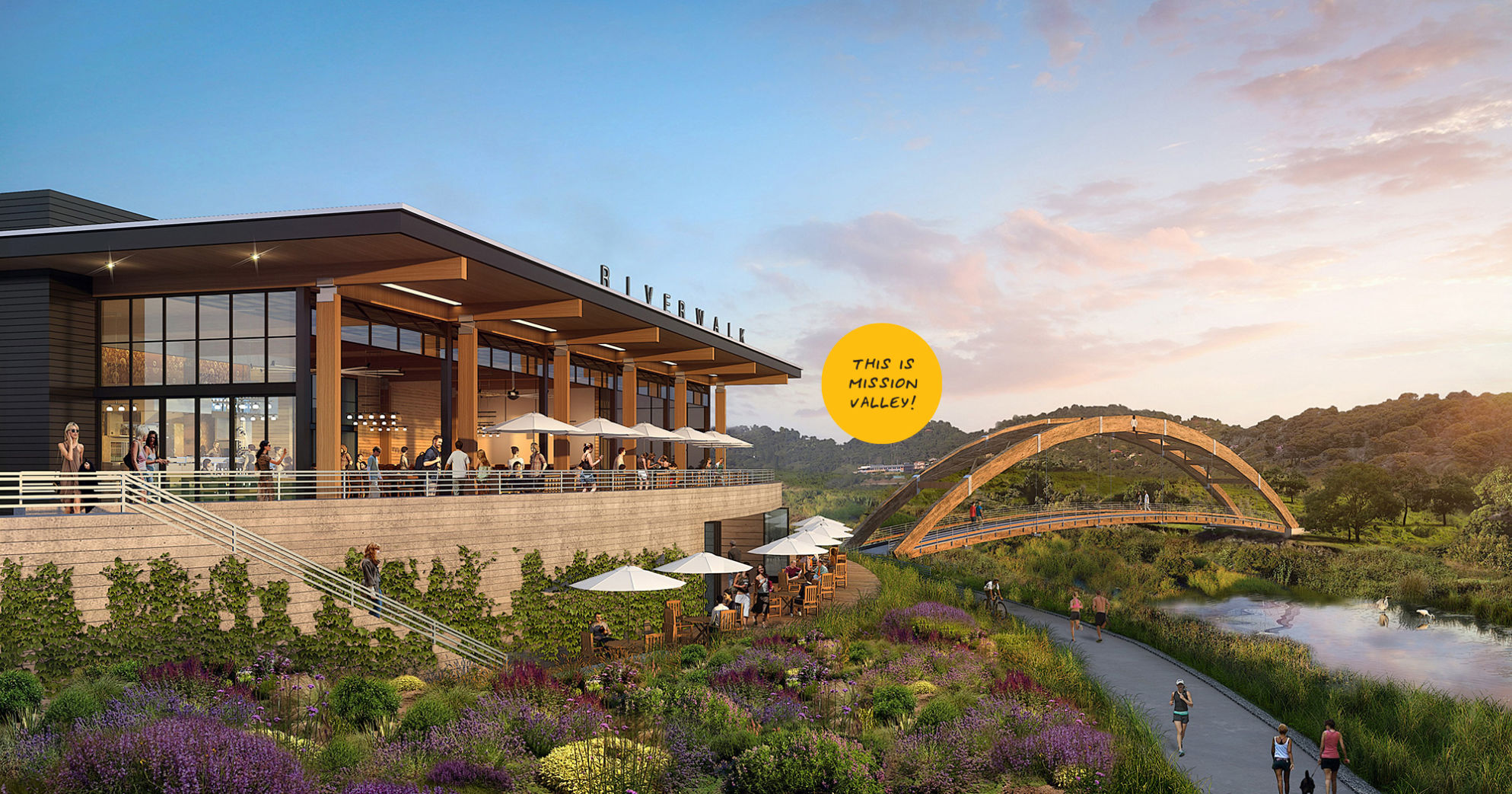
A rendering of the project that will replace Riverwalk Golf Club’s 27 holes in Mission Valley
More people will be living near transit, perhaps on a former golf course.
Right now, developers are hammering away at transit-friendly projects like Bayview Plaza, a mixed-use complex with 156 residential units on Morena Boulevard (next to a future trolley station at Clairemont Drive). Riverwalk Golf Club’s 27 holes in Mission Valley will give way to “San Diego’s first true transit-oriented village,” according to developer Hines. That includes thousands of rentals, retail, office space, a 100-acre park, and a new trolley station. Hines anticipates the first move-ins will start around the second half of 2022.
You could have three residential units on your lot.
New state legislation, as of this year, allows for two accessory dwelling units on a single-family lot—essentially, you can build a triplex. “It was just one word they added,” says Sean Canning, principal architect at Ten Seventy Architecture. “A companion unit and/or a junior unit.” (A companion unit can be freestanding; a junior unit is attached to another unit, and it can share a bathroom.)
Right now the cost of construction is high, but consider that the city is waiving the impact fees (which usually amount to $40,000–$50,000) so it’s a good time to think small infill development. Canning’s firm is focusing on areas like Logan Heights in Southeast San Diego, which lies in an Opportunity Zone, an IRS-designated area where investors can enjoy a tax break on capital gains after 10 years. Read more about ADUs.
Co-living will happen.
Last April, a company called Common announced a $300 million expansion into four cities—Philadelphia, Pittsburgh, Atlanta, and San Diego. They were going to bring new “all-inclusive living” to San Diego, where every tenant is called a “member,” and the bedrooms are private but the kitchens, living areas, and some bathrooms are shared. Everything is furnished; there’s free laundry on-site and weekly cleaning of shared spaces. This kind of arrangement has come to be known as “co-living.” Common still hasn’t quite debuted in San Diego, but the property management company is working with local developers, so expect to see them in the near future.
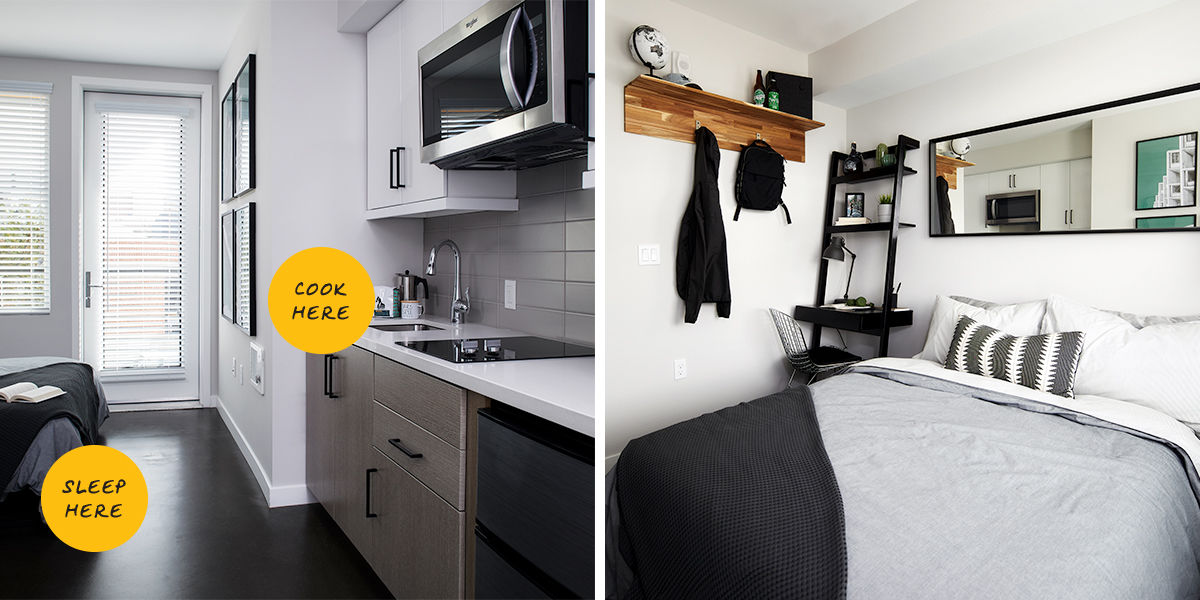
Future of Housing – Micro-Apartment
Andy McRory
Your kids will live in a micro-apartment or tiny house.
A microunit is a studio as small as 200 square feet, sometimes outfitted with space-saving design and furniture, such as a Murphy bed or a coffee table that can rise and expand into a dining table. San Diego’s first microunit building, Nook (pictured below), opened in March 2019 in the East Village. The 91 units measure 250 to 300 square feet, include a bathroom and kitchenette, and with utilities and internet come to $1,300 per month. (A typical studio downtown costs about $2,000 per month.) The microunit is revolutionary in that it allows someone who doesn’t make six figures to live independently. “Our tenants are millennials, seniors, and they’re almost always single,” says David Allen, whose firm, Trestle Build, brought Nook to life. He specializes in “naturally affordable housing,” aka workforce housing. Other microunit offerings include Studios435 downtown and a swanky Jonathan Segal building in Little Italy called The Continental.
